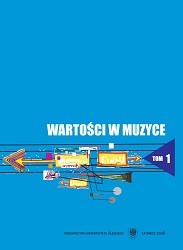
We kindly inform you that, as long as the subject affiliation of our 300.000+ articles is in progress, you might get unsufficient or no results on your third level or second level search. In this case, please broaden your search criteria.

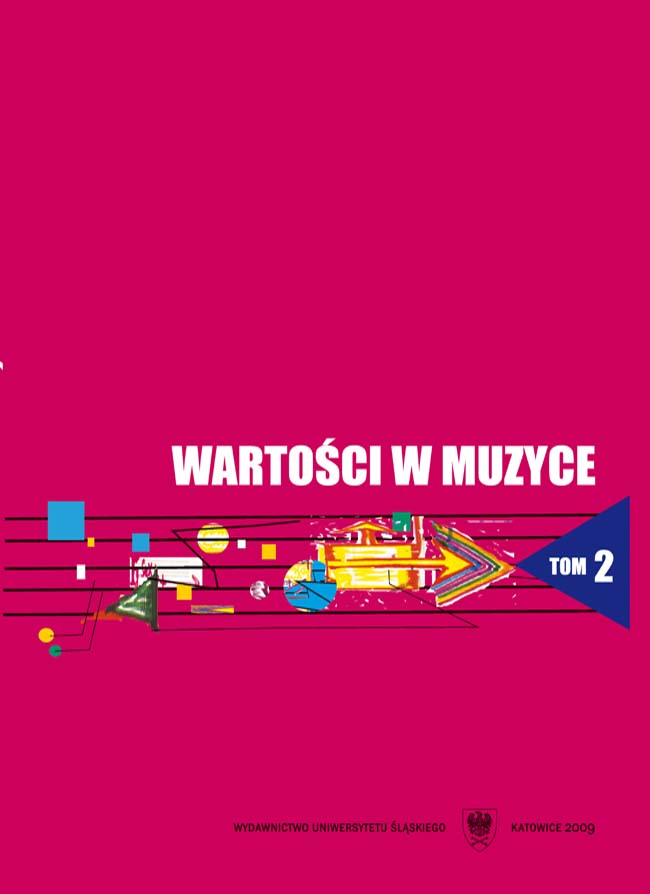
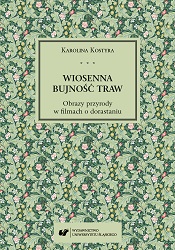
This book analyzes the manifestation of nature in coming of age mov-ies. The constitutive feature of the coming of age film is the presence of the rites of passage into maturity. These rituals follow the initiation schemes described in anthropological works. Usually it comes to them in nature: in forests, in deserts, away from home. Drawing from Jungian psychoanalysis, religious studies and theories concerning myths, tales, symbols, this work draws attention to the symbiotic dependence that connects the film heroes with the life cycle present in nature. Nature at the threshold of adulthood usually appears as a dense, fertile, self-living (though often coincident with the experience of the "human" hero) life. Nature in this approach allows teenagers to distance themselves from familiar areas and embrace new, exciting sensations. Summer holidays allow to experience adventure of adolescence – the background of most coming of age movies.The first part of the book entitled Szałasy concerns stories in which the main motive is a journey towards adulthood, sometimes forced, sometimes funded at own request. The school of survival, which is located in the wilderness, teaches independence and courage. Films revolving around the survival growing up type force the protagonist to kindle bonfires, hunt animals – to create metaphorical or literal huts. In Stand By Me (1986, directed by R. Reiner), boys from an American town from the late 1950s are going on a trek along the railway tracks to see the corpse of their peer hidden in the forest. In The Kings of Summer (2013, directed by J. Vogt-Roberts), modern high school students decide to escape from home comfort to the surrounding forest, where they build their hut styl-ized for Thoreau. In Walkabout (1971, directed by N. Roeg) a teenage heroine and her younger brother orphaned by her father wander through the Australian outback, while in the Polish short documentary Płyną tratwy (1962, directed by W. Ślesicki) Mietek from the Augustów village is goes for the first time to work by the timber rafting. The stories quoted are bond by the rite of passage with risky initiation attempts and nature, which is great, lofty and dangerous. Letniska – the second part of the book – focuses on summer holidays, love and nature, which more than a dense jungle resemble an overgrown park or an en-chanted garden. Nature harnessed by the experience of a vacationer no longer encourages crazy trips, but to walk and not to sleep all night long. In such circum-stances, teenagers from the pioneer camp in One Hundred Days After Childhood(1974, directed by S. Sołowjow) experience a painful love initiation. In A Day in the Country (1936) by Jean Renoir, on Sunday spent in nature, a young girl leaves her parents for a moment to experience the true feeling in love for the first and last time. Dancing w kwaterze Hitlera (1968, directed by J. Batory) and Crazed Fruit (1956, directed by Kô Nakahira) tell about summer love in a more bitter and angry tone. The film crowning the second chapter, and in a sense the whole work, is By the River Nowhere (1991, directed by A. Barański), which in perverse way uses the motives of the coming of age cinema, but does not differ from the genre.The book's focal point is the attempt to determine the essence of youth, which is subject to the story of puberty, as well as to define what is left behind by the time of adolescence. Youth is defined not as a state but as a process exist-ing as much as it still exceeds itself. The story revolving around the initiation scenario operates with a certain tonality, offering the viewer not only a specific mood (nostalgia or joyful expectation), but also a vision of great and short youth. Its volatility is emphasized by the clearly marked "here and now" in which the main part of the story takes place. The moment is struck by impressionism in the loud croaking of frogs, the sound of wind in the leaves of the trees or the shots of the sun looking out from behind the branches.
More...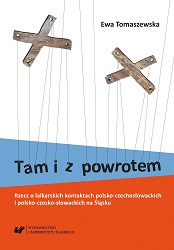
The book is an attempt to document Polish-Czechoslovak, as well as Polish, Czech and Slovak puppetry collaboration. It also provides an analysis of the phenomenon of mutual influence between these theaters. The inspiration to write this book comes from a visit of the Czech and Slovak artists to the Polish puppetry theaters, which is particularly conspicuous in the Silesia region. Unlike the Polish theater, the Czech and Slovak puppetry tradition is long and rich, which resulted in the situation that Czechoslovak puppetry took root in the tradition that was enhanced by the imposed doctrines of social realism, whereas Polish puppet theater was shaping more freely with no encumbrance. Thus formed Polish style which made use of visual texture and various means of expression that transcended the traditional idea of a puppet, and experimenting with the power of expression by using a puppet along with a real human actor, proved inspiring to the neighboring country of Czechoslovakia. At the turn of the 1970s and 1980s Czech and Slovak artists commenced appearing on Polish puppet stages. With the advent of the 1980s these visits turned into a close international collaboration. Among the most active artists on the Silesian scene were: from Slovakia, Marián Pecko and his team (Eva Farkašová, Jan Zavarský, Pavol Andraško, Robert Mankovecký); from the Czech theater, Matěj Kopecký, Miroslav Vildman, Karel Brožek, Petr Nosálek, who brought their collaborators (Alois Tománek, Petr Litvík, Tomáš Volkmer, Pavel Hubička, Pavel Helebrand, Nikos Engonidis). In the 1990s Polish puppet theaters boasted guests from Zaolzie; among them were Rudolf Chowaniok, Paweł Żywczok, Halina Szkopkowa, and Janusz Klimsza. At the same time Czech artists, such as Karel Brožek, Petr Nosálek, Jakub Krofta, became artistic directors of the puppet theaters in Katowice and Wrocław, which was an unprecedented phenomenon. Apart from the above-mentioned artists, there are others working for puppet theatres in Silesia, as well as in other regions of Poland, namely, Norbert Bodnár, Simona Chalupová-Pěničková, Hana Cigánová, Karel Fiszer, Vacláv Kábrt, Pavel Kalfus, Josef Krofta, Lukáš Kuchinka, František Lipták, Zdeněk Miczko, Jan Polívka, Ondrej Spišák, Libor Štumpf, Povel Uher, Marek Zákostelecký. These artists represent older generation as well as younger ones, who completed their studies at the faculty of Alternative Art and Puppetry in Praha. This particular situation did not remain unnoticed as Hanna Baltyn claims that the Czech and the Slovak rule, and Henryk Jurkowski asks whether this means an invasion. Therefore, questions arise as to what extent the Czech and Slovak presence in the Polish puppetry is conditioned by the opening of borders, community of cultural references, and weakening position of the Polish theater, or whether it is the result of permanent cultural fluctuations. This publication seeks answers to these questions. In addition, it depicts most significant performances staged in Silesian theaters in 1980–2010 by artists from Czech and Slovakia.
More...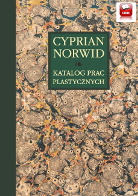
The publication is the first complete study in the form of an academic catalogue of the artistic works by Cyprian Norwid (1821–1883), one of the most outstanding authors in the history of Polish culture. The complete, six-volume edition of the catalogue will include all that was drawn, painted or created in any other technique, that is, it includes drawings, watercolors, paintings and oil studies as well as graphic works, designs for sculptures and medallic works. Apart from the works that have been preserved, also ones that are considered lost, but were published during the artist’s life or after his death, as well as works we only know by their titles or from even minor mentions will be included.The catalogue will include both works with indisputable artistic value and rough sketches like notes in the form of drawings; and also, apart from loose compositions – works drawn on pages of sketchbooks and albums; moreover, drawings that are found in Norwid’s artistic and journalistic texts, in his letters and notes.Volume Four of the catalogue contains the second part of the section: Loose Works, comprising Norwid’s sketches and watercolors painted in the years 1858–1883. Each catalogue item contains complete information on the work, along with its complete bibliography and a color illustration.
More...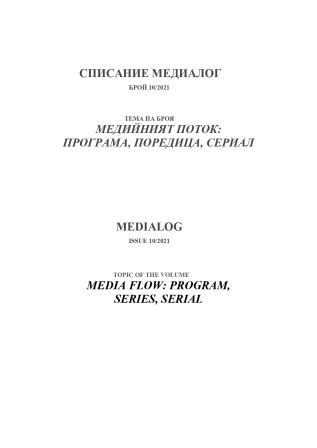
The text presents the main conclusions based on the study of the political messages in the Turkish series broadcasted on Bulgarian television and on Netflix. The main political messages in the series, showed on Bulgarian television, are the responsibility for decisions, connect with the life of a woman and a child. Among the important political topics are: migration, education abroad and returning home, conflicts between rich and poor.
More...
The article presents the specific dimensions of the “garden as a workshop” developed by the Bulgarian immigrant gardeners in Hungary at the end of the 19th and the beginning of the 20th century. The importance of various factors (availability of land, water resources and urban markets, etc.) is outlined. These influenced the arrival and settlement of gardeners in the Habsburg Empire, but also – with the new approaches to cultivating the land and placing the produce – testify to a specific process of modernization in theterrain of agriculture. The article highlights the significant role of Bulgarian gardeners in this process, thanks to which they could not only establish themselves and respond to the new social demands, but also laid the foundations for their long-term presence and interaction with Hungarian society.
More...
The purpose of the research is to outline the specifics of Bulgarian gardeners and Bulgarian horticulture in Budapest in the first quarter of the 21 century by means of two examples.Methods of observation, biographical approach, and free and semi-structured interviews are applied. The relationship between Bulgarian horticulture and cultural heritage is analyzed.The study is the result of the author’s participation in a project “Migrations. Modernities, and Intercultural Mediation – Bulgarian Immigrant Groups to Hungary in late 19th and early 20th c. and their Impact on the Social and Cultural Life of the Host Society”.
More...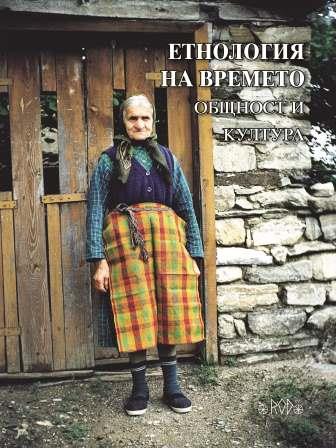
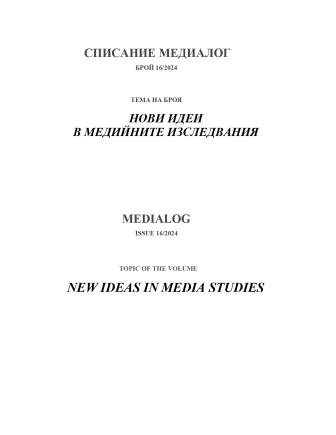
This review presents Martin Marinos's Free to Hate: How Media Liberalization Enabled Right-Wing Populism in Post-1989 Bulgaria (University of Illinois Press, 2023). Marinos's in-depth analysis reveals the close link between the media and the rise of right-wing populism in post-socialist Bulgaria. Marinos focuses on the connections between phenomena such as neoliberalism, racism, populism, and media commercialization.
More...
44 scientists participated in the International Scientific Conference dedicated to Prof. Ivaylo Dichev, on the topic: Pop-culture, Pop-politics: The Digital Turn. Interdisciplinary Analyses Of The Intersectionality Between Media, Cultures And Politics. The conference concludes the research project "Pop-culture, pop-politics: The digital turn. Interdisciplinary analyses of the intersection between media, cultures and politics" of the Sofia University. The conference was implemented with the help of the Cultural Studies Network, the journal "Seminar_BG", the Department of "Radio and Television" of the Faculty of Journalism and Mass Communication, and the Department of "History and Theory of Culture" at the Faculty of Philosophy, together with scientists from the Institute of Philosophy and Sociology of the Bulgarian Academy of Sciences.
More...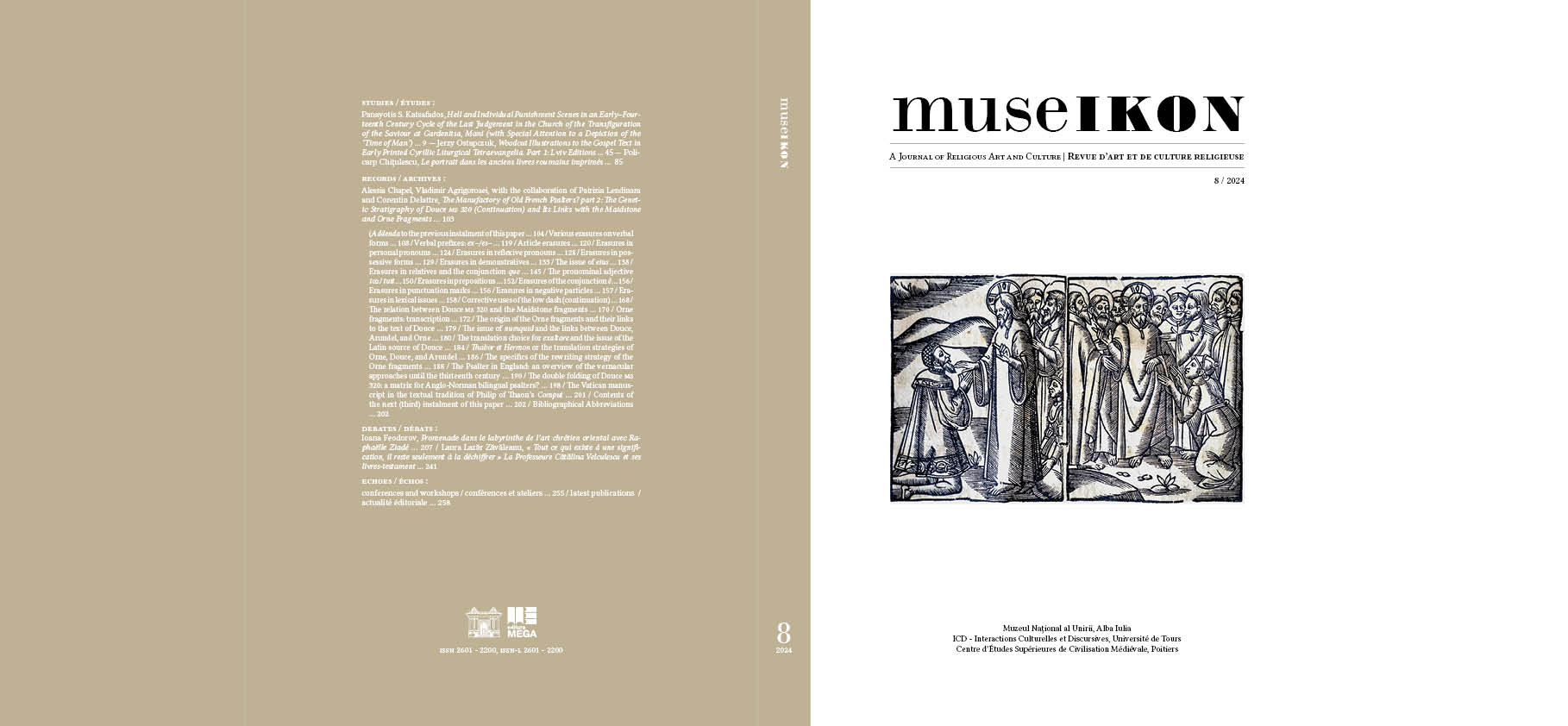
L’une des plus curieuses représentations du cycle du Jugement dernier de la péninsule de Mani (La-conie) peut être admirée dans le narthex de l’église de la Transfiguration, dans le village de Gardenitsa. Les représentations des pécheurs ont été initialement attribuées à un artiste du xviiie siècle, mais des travaux de restauration récents ont remis en question l’ancienne datation en faveur du xve siècle. L’Auteur montre, grâce à une analyse paléographique, que les caractéristiques des lettres et un certain nombre de particularités stylistiques peuvent être attribuées à un peintre local, Nomikos, dont l’oeuvre comprend d’autres églises peintes dans la région au début du xive siècle : l’église Saint-Georges à Marasse / Kitta, l’église Saint-Nicolas à Nymphi et le catholicon du monastère de Phaneromeni. Les peintures et les inscriptions de Gardenitsa pourraient être datées d’environ 1326/1327 et elles seraient, peut-être, parmi les dernières créations du peintre Nomikos. Contrairement aux châtiments individuels de pécheurs tels qu’on les connaît dans les peintures crétoises, chypriotes ou même serbes, le cycle peint sur la voûte ouest de l’église de Gardenitsa présente quelques traits qui le particularisent. Dans les huit cadres, regroupés en deux groupes de quatre sur les côtés nord et sud de la voûte, l’accent est sou-vent mis sur le clergé et les personnes qui lui sont liées (les femmes des prêtres, par exemple). Il n’y a pas de péchés de nature agricole ou familiale, et l’une des scènes représente un personnage mystérieux, ac-compagné d’une inscription qui se réfère au ‘Temps de l’homme’. C’est d’ailleurs la seule représentation d’un pé-cheur à Gardenitsa qui ne trouve pas de terme de comparaison dans les cycles de pécheurs d’autres régions du Commonwealth byzantin. L'auteur identifie un certain nombre de modèles qui semblent avoir fusionné pour créer une représentation entièrement nouvelle. Le premier est certainement la parabole du mauvais riche et de Lazare, dont la place est souvent parmi les scènes accompagnant le Jugement dernier, sauf que le riche représenté à Gardenitsa ne conserve que certaines caractéristiques iconographiques de la scène attendue. Une autre image qui semble avoir été utilisée dans la scène de Gardenitsa peut être celle de l’homme poursuivi par une licorne dans une parabole de l’histoire de Barlaam et Josaphat. L’arbre sur lequel s’appuie le riche de Gardenitsa et les deux chiens noir et blanc (au lieu des souris), symbolisant le jour et la nuit, sont des éléments qui semblent avoir été repris de cet autre modèle. Le troisième modèle pourrait être une série d’images que l’on retrouve dans des psautiers occidentaux. Après un inventaire succinct d’autres représentations occidentalisantes retrouvées dans la péninsule de Mani ou dans le reste du Péloponnèse, l’auteur conclut que les modèles fusionnés par l’artiste de Gardenitsa proviennent de manuscrits. Il pourrait s’agir des mêmes manuscrits que le donateur (aujourd’hui anonyme) semble offrir au Christ dans la scène votive. On suppose que ce fondateur est peut-être à l’origine des innovations iconographiques en question.
More...
Le présent article se concentre sur les cycles d'images narratives de l'Évangile, présents dans les premiers Tétraévangiles liturgiques imprimés en cyrillique et publiés à Lviv. Les sept éditions des Évangiles publiées par l'imprimerie de la Confrérie de Lviv, ainsi que celle publiée par Mykhailo Slozka, comportent de nombreuses illustrations narratives placées en lien direct avec les versets qui décrivent les scènes représentées. Une étude approfondie de ces cycles évangéliques d'images narratives, ainsi que les changements que les illustrations ont subis dans chaque édition, nous permettent de classer les modèles de représentation en trois groupes, et de diviser les huit Tétraévangiles de Lviv en deux groupes. Deux annexes présentent toutes les images narratives gravées sur bois dans les éditions des Évangiles de Lviv. Le premier appendice contient des représentations d'événements évangéliques dans les Tétraévangiles de Lviv, tandis que le deuxième appendice présente les illustrations narratives de l'édition de Mykhailo Slozka.
More...
The painted, engraved, or sculpted portrait is an attempt to immortalize a person and preserve their memory. Often, portraits served both didactic and aesthetic purposes, particularly in religious texts. In Orthodox books, portraits typically depicted saints rather than individuals contemporary with the time of the book's publication. It is exceedingly rare for an Orthodox book to include the portrait of a person who was alive at the time of publication or who had passed away relatively close to that date. While the practice of including portraits of individuals associated with a book was common in the West, it is a notable exception in the history of Romanian engraving and printing tradition. In this study, we have sought to identify the individuals and volumes printed in the Romanian Lands up to the nineteenth century in which such portraits appeared. We have also examined the motivations behind the inclusion of these portraits, whether engraved in wood or brass. This research was inspired by the portraits of Elder Paisios of Neamţ († 1794), printed in books by his disciples. We will analyze these representations of the great hesychast and then explore several other portraits we have identified in Romanian books thus far.
More...
Le présent article s’inscrit dans la continuité de celui qui a été publié en 2023 dans la même revue (The Manufactory of Old French Psalters: Part 1…). Ce deuxième volet comprend d’abord une section de addenda qui complètent certaines parties du précèdent article. S’ajoutent ensuite les érasures dans diverses formes verbales, suivies par un recensement des corrections liées aux préfixes ex– et es–. D’autres séries d’érasures concernent différentes parties du discours: articles définis; pronoms personnels; pronoms réflexifs; formes possessives; démonstratifs; avec une étude de cas sur les choix de traduction du génitif eius, dont plusieurs documentent l’existence d’un antigraphe. Il s’agit souvent d’une hésitation entre les formes faibles et fortes. Des sections com-plémentaires sont consacrées aux érasures des pronoms relatifs et de la conjonction que; à l’adjectif pronominal toz / tuit; aux prépositions; à la conjonction é; aux signes de ponctuation; et aux particules négatives. L’ana-lyse des érasures du manuscrit d’Oxford, Bibliothèque bodléienne, Douce 320 se termine par un examen détaillé des corrections liées à différents phénomènes lexicaux. L’article porte ensuite sur les rapports entre le manuscrit Douce et les fragments de Maidstone, dont la transcription a été publiée dans le premier volet. Suivent une transcrip-tion des fragments de l’Orne (Paris, Archives Nationales, dossier AB xix 1734) et une étude sur l’origine de ces derniers et sur leurs liens avec le texte de Douce. Les choix de traduction pour le latin numquid documentent les liens entre Douce, Arundel (Londres, Bibliothèque britannique, Arundel 230) et Orne. Les choix de traduction du latin exaltare permettent en partie de restituer le texte latin de la source de Douce. Les différentes stratégies de traduction d’Orne, de Douce et d’Arundel semblent être des réécritures d’antigraphes similaires. Toutes ces ana-lyses montrent que Douce, Arundel, Orne et Maidstone proviennent de deux ou plusieurs gloses vernaculaires apparentées. L’article propose ensuite une perspective globale sur les approches vernaculaires de la traduction des psaumes en Angleterre jusqu’au xiiie siècle, qui documente l’interaction des langues vernaculaires anglaises et françaises avec les textes (et l’exégèse) latins. Il se termine par une discussion (appuyée sur deux exemples du xiie siècle) concernant le double pliage du Douce, lié sans doute à sa circulation et à son emploi dans la réalisation des psautiers bilingues à deux colonnes. Le troisième volet du présent article est prévu pour 2025. Il comprendra la transcription du texte de Douce (avec l’accentuation originale et l’emplacement des érasures), ainsi que plusieurs études complémentaires.
More...

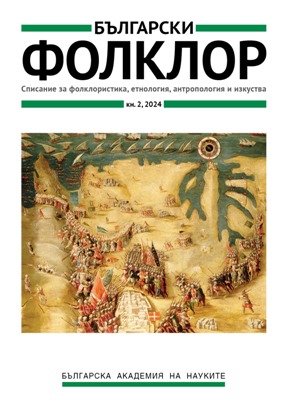
The article summarizes the concepts of historicism of the folklore-poetic works established in our science at the end of the last century. It reviews the recordings and publications of Bulgarian folk songs with the motif "A Virgin Rescues Malta" and examines the research and opinions concerning them. The article also analyses the metadata, associated with the already published versions, throwing more light on the context of their existence at the time of their recording in written form.
More...
The article examines, from a historical and contemporary perspective, the processes of valorizing diaspora gardening as local heritage in two significant "gardener villages": Polikraishte and Draganovo (within the municipality of Gorna Oryahovitsa). Based on field research conducted in Bulgaria and Hungary, the publication investigates how diaspora gardening becomes part of the local festivities and commemorative practices. The article traces how transnational gardening, while practiced as a local livelihood, is connected to traditional festivities and examines the changes in the local dimensions of the festive calendar during socialism and more recently. A separate section is dedicated to the new festivity (its emergence, development, and messages) as a current means of transforming local livelihood into cultural memory and the local heritage of the two settlements.
More...
The article aims at presenting the activities of the people of the municipality of Garmen, Southwest Bulgaria, related to the socialization of tangible immovable religious heritage of local importance and their vision for changing it into a tourist product. There is no specialized local policy regarding cultural heritage, but voluntary initiatives to restore Orthodox sites and the spaces around them involve people of different faiths. As a result of their civic activism, a collective sense of attachment to heritage is strengthened, which in turn becomes an important element of their regional identity. The results of an ethnological study conducted in April–May 2022 in the villages of Garmen, Dabnitsa and Skrebatno are presented. The data were collected through open-ended interviews with representatives of the municipality of Garmen and people who live near the cultural values and are committed to the cause of their restoration and socialization.
More...